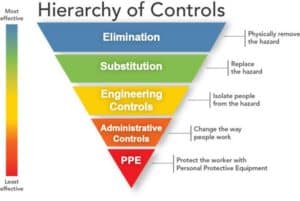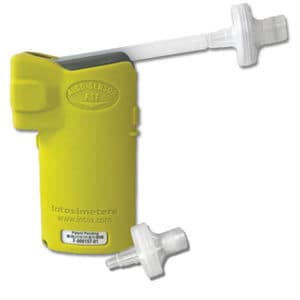by Rankine Forrester, CEO, Intoximeters
The emergence of the Novel Coronavirus SARS-CoV-2, the cause of COVID-19, has sparked a re-assessment of best practices for the mitigation of disease transmission in the field of breath alcohol testing.
The highly contagious nature of COVID-19, the current lack of reliable therapeutics to counter the infection and lack of immunization to protect against getting COVID-19 in the first place makes Coronavirus SARS CoV-2 a greater concern than other diseases that can be spread via airborne transmission of germs. This awakening to the possibility and risks associated with airborne transmission changes the way we consider exposing ourselves to conditions where airborne transmission is more likely to occur. The fact is there are relatively simple procedures that can be used to reduce the risks associated with airborne disease transmission while performing a breath alcohol test.
Per the Centers for Disease Control (CDC) website:
“Controlling exposures to occupational hazards is a fundamental way to protect personnel. Conventionally, a hierarchy has been used to achieve feasible and effective controls. Multiple control strategies can be implemented concurrently and or sequentially. This hierarchy can be represented as follows:” (image from the CDC website)

To prevent infectious disease transmission, elimination (physically removing the hazard) and substitution (replacing the hazard) are not typically options for law enforcement or workplace settings. However, exposures to transmissible respiratory pathogens can often be reduced or possibly avoided through engineering and administrative controls and PPE. Prompt detection and isolation of potentially infectious people that could be encountered are important to prevent unnecessary exposures.
Using basic PPEs like gloves and masks is one level of defense that can be used by the instrument operator to avoid transmission from touching the subject or being in close proximity to the subject.
During the breath test itself, if a barrier filter mouthpiece, based on technology similar or more efficient than what is used in an N-95 respirators, is utilized to capture and trap infectious particles from the breath prior to leaving the mouthpiece, the provided breath sample will contain few, if any, germs that are subsequently expelled into the breath alcohol testing instrument and thereafter expelled into the ambient air of the testing area. In fact, the breath sample provided for testing will be much cleaner than the breath sample exhaled from an infected subject during normal respiration.
Preventing the infectious material from getting past the mouthpiece keeps the instrument free from deposited infectious germs. Trapping these particles all but eliminates the possibility that the operator or bystander is exposed by the breath provided to the instrument for analysis. Likewise, if the filter operates in a bi-directional manner, even if infectious material was in the instrument from a prior test, the filter mitigates the possibility that the subject could be infected by sucking the sample back through the instrument and mouthpiece.
The filter is an ideal solution intended to:
- Protect the subject;
- Protect the operator;
- Protect maintenance technicians and other handlers of the instrument;
- Protect others in the vicinity of the breath alcohol test;
- Produce minimal backpressures so samples are not hard to provide; and
- Reduce the need for instrument cleaning and disinfection
Intoximeters, Inc. has developed a patent pending, filtered mouthpiece. The Intoximeters TestSafeTM Mouthpiece is a bi-directional filtered mouthpiece, based on filter technology similar to what is used in N-95 respirators. The mouthpiece is designed to either entirely replace an instrument’s mouthpiece or to be used as an adapter to plug onto the ends of standard mouthpieces; depending upon the instrument it is used with.
Independent laboratory testing shows that the TestSafeTM Mouthpiece has viral filtration efficiency of 99.93% or better and the bacteria filtration efficiency of 99.99% or better for gaseous flow rates of 28.3 LPM.
Both in-house at Intoximeters and testing at NHTSA has demonstrated that the filtered mouthpiece does not impact breath alcohol results.
COVID-19 has forced us to consider safety procedures we can, and arguably should, consider for use now and in the future. The barrier filter mouthpiece is a solution that adds a modest cost to each test, but when considered against the potential costs of not using it, seems inconsequential. Intoximeters has prided itself on producing instruments that offer the highest level of operator safety and is proud to offer the TestSafeTM Mouthpiece to continue in that tradition.
